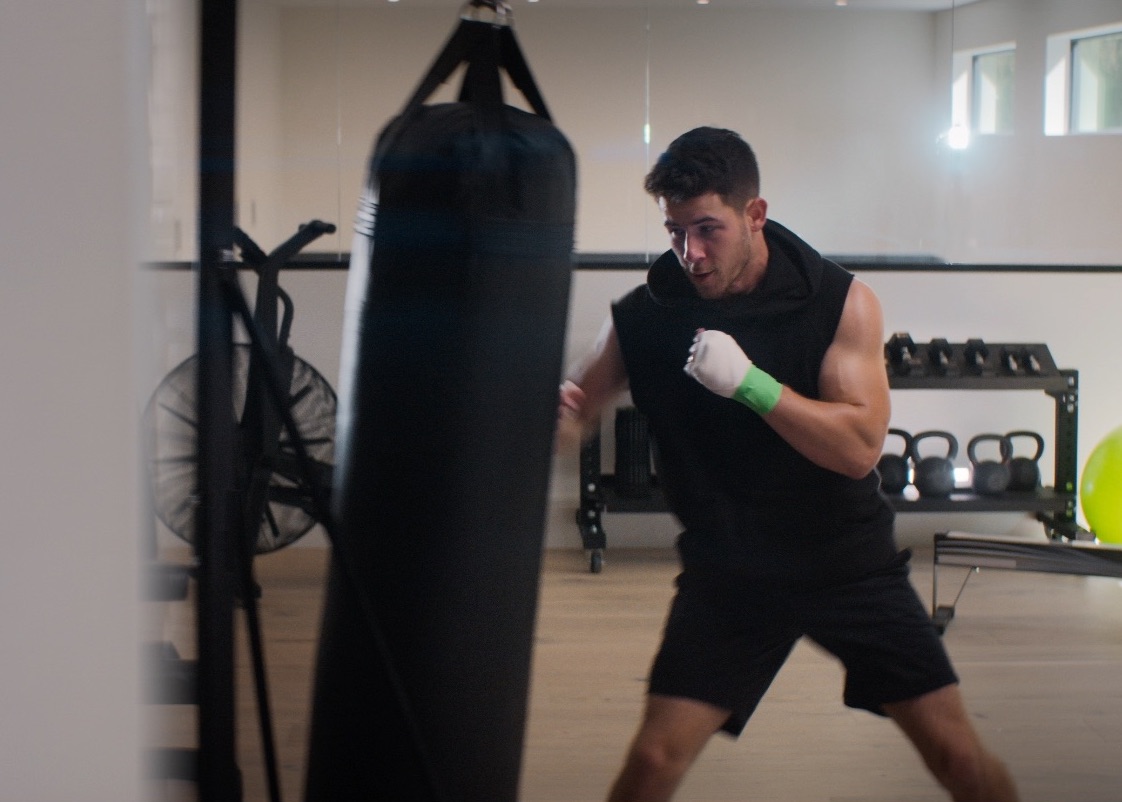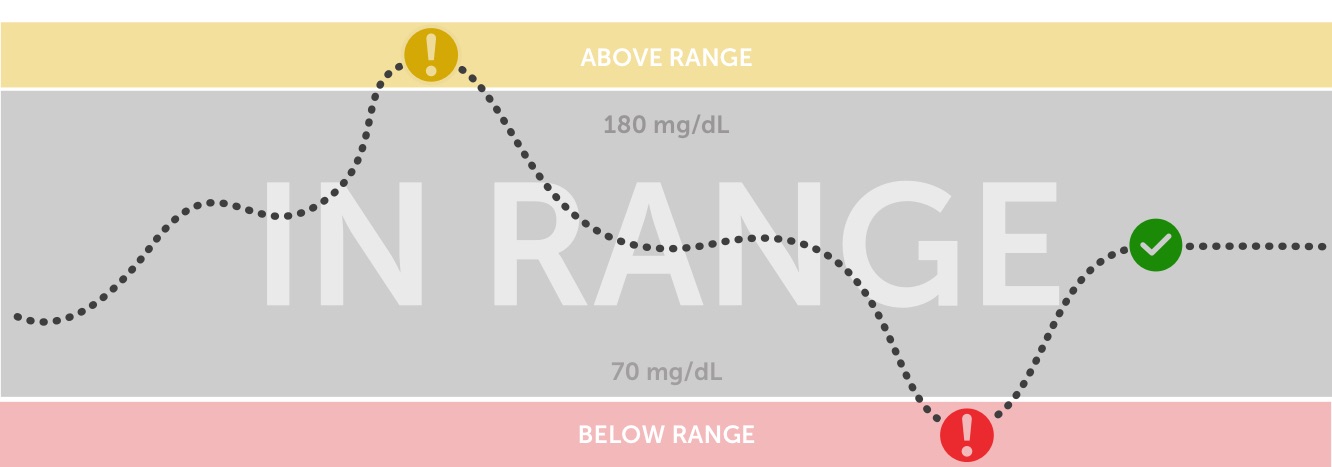Nick Jonas: The More Time He Spends in Range, the Better He Feels
By Matthew Garza
 By Matthew Garza
By Matthew Garza
Nick Jonas, singer, actor, and advocate for people with diabetes, is launching The Global Movement for Time in Range, an educational ad campaign to raise awareness for Time in Range in partnership with Beyond Type 1, other diabetes nonprofits, and Dexcom. Learn about Nick’s experience with Time in Range and why he is launching this initiative now.
It’s time to “kickstart the conversation here around the importance of Time in Range and how it makes people’s lives better,” popstar Nick Jonas said last week, announcing the launch of the Global Movement for Time in Range campaign.
The actor, singer, and diabetes advocate, who has was diagnosed with type 1 diabetes as a child, is lending his star power to this effort to show how using Time in Range can help people better manage diabetes. His nonprofit organization Beyond Type 1 is joining forces with diabetes technology company Dexcom and other organizations for this effort, which hopes to increase awareness and support the adoption of Time in Range as a valuable metric in diabetes management around the world.
“It really has become such an important thing for me to think about Time in Range and what it really means, and not only relying only on A1C,” Jonas said.
He called Time in Range “a valuable real-time tool.”
Though some may be familiar with Time in Range (TIR), many people haven’t heard of this newer diabetes metric. So, what is Time in Range?
TIR is the percentage of time that a person spends with their blood glucose levels in a specific target range – and though this may be different for each person, for most people with diabetes, that range is from 70 mg/dL to 180 mg/dL. You can learn more about specific goals on diaTribe’s Time in Range resource page – for example pregnant women are advised to stay within a range of 63 mg/dL to 140 mg/dL for at least 70% of the day, while those with a greater medical risk are encouraged to stay within the range of 70 mg/dL to 180 mg/dL for at least 50% of the day.
TIR acts as a powerful supplement to your A1C level. As Jonas said, “A1C is a useful piece of data.”
But while your A1C shows your average glucose level during a three-month period, TIR provides a more complete and detailed picture about your day-to-day diabetes management, including variation in your blood glucose levels. For example, when you use TIR, you might be able to see how a salad at lunch or a morning workout affected your glucose values.
 “Everyone’s journey with diabetes is different,” Jonas said at the press conference. “For me [being able to achieve a good Time in Range] is a combination of relying on my doctor’s input and the real-time changes that we make to my life with diabetes as a whole. And part of that is physical activity, it’s diet, and it’s just general management – what is serving my body. Because I live such a crazy lifestyle, I think of myself more so as an athlete in some settings. I am prioritizing living a healthy life with my diabetes but also wanting to perform my best, so there’s a combination of factors that come into play and one of the main aspects is knowing where my glucose is in real-time.”
“Everyone’s journey with diabetes is different,” Jonas said at the press conference. “For me [being able to achieve a good Time in Range] is a combination of relying on my doctor’s input and the real-time changes that we make to my life with diabetes as a whole. And part of that is physical activity, it’s diet, and it’s just general management – what is serving my body. Because I live such a crazy lifestyle, I think of myself more so as an athlete in some settings. I am prioritizing living a healthy life with my diabetes but also wanting to perform my best, so there’s a combination of factors that come into play and one of the main aspects is knowing where my glucose is in real-time.”
The easiest way to track your TIR is with a continuous glucose monitor (CGM), which measures your glucose levels at least every five minutes – that’s 288 glucose readings each day.
“Like everyone else in the world, I am a person that looks at my phone way too much. And so, having [glucose data and Time in Range information] right there is really helpful,” said Jonas.
Even if you don't use a CGM, there are ways to use your blood glucose meter (BGM) to calculate your TIR (though it may be slightly less accurate because you can’t get as much glucose data).
One of the biggest challenges in promoting TIR is that many people with diabetes aren’t aware of this powerful tool. In a survey carried out by Dexcom, 47% of people who use insulin reported that they didn’t know what TIR was, and 53% had never discussed TIR with their healthcare professional. Though progress has been made to get CGMs to more people with diabetes, there are still financial barriers that prevent people from having a CGM and being able to use TIR effectively – this partially explains why so many don’t know about TIR and how to use it.
“[There is] a need for access and this growing conversation and it’s a priority for us all in the US and globally,” said Jonas. “The exciting thing for us was starting the conversation about awareness in a big way at the Superbowl. It was a really big step and so I was thrilled to be a part of [that moment]. Thinking back to when I was newly diagnosed, if there was someone that I looked up to or admired who normalized something like diabetes on a stage as big as the Superbowl, that would have been really exciting.”
This is why Jonas said he is spreading the word on Time in Range. This educational initiative aims to raise awareness of Time in Range and the benefits that this powerful metric can provide for people with diabetes, their loved ones, and their healthcare team.
As a part of this campaign, WhenInRange.com was created as an informational hub. It holds helpful resources for people with diabetes and healthcare professionals, including infographics and educational videos with leading experts such as Dr. Steve Edelman (an endocrinologist and founder of Taking Control of Your Diabetes, TCOYD) and Diana Isaacs (a diabetes educator at the Cleveland Clinic). And as Jonas joked, “You know, of course, there’s this little thing called social media which can be very helpful.” He encouraged people to talk about their experiences with Time in Range and spread the word online using #WHENINRANGE.
“Like all things in my life with diabetes, I rely on my doctor for everything,” Jonas said. “We have a lot of candid conversations and I think that the thing that really stood out to me was talking through the benefits [of Time in Range]. High blood sugar levels are not ideal and have an effect on day to day life with diabetes, and obviously lows can be really dangerous and also have a major effect."
He said that he uses the Dexcom Clarity app to see in real time throughout the day the moments when his glucose is in or is out of range.
"And that’s the thing to remember," he said, "my main advice to newly diagnosed people is to take a deep breath and try to understand that there are going to be days that are unpredictable and harder than the others and don’t get down on yourself for that.”

In a rapidly changing world, having access to technology and tools that will help you better manage your diabetes is more important than ever, said Dr. Francine Kaufman, diaTribe’s scientific and medical advisor and Chief Medical Officer for Senseonics.
“Time in Range helps you manage your diabetes more effectively,” she said. “You can see what your food, your activity, your sleep, and even your mood do to your overall glucose levels and then you can make more informed decisions. It helps put you in the driver’s seat with actionable information about your diabetes and it gives you a way to monitor your progress.”
In addition to this important glucose tool, Jonas emphasized that having role models and a strong support system are essential to living well with diabetes. “When I was newly diagnosed, there really wasn’t a person that I knew of who had diabetes,” he said. “It was a real goal for me to be outspoken, hoping that it would bring people some encouragement so they would feel like they have someone on the journey.”
Talk to your loved ones, support system, and healthcare team about how you can start to use Time in Range. To learn more about Time in Range, view diaTribe’s resource page.








